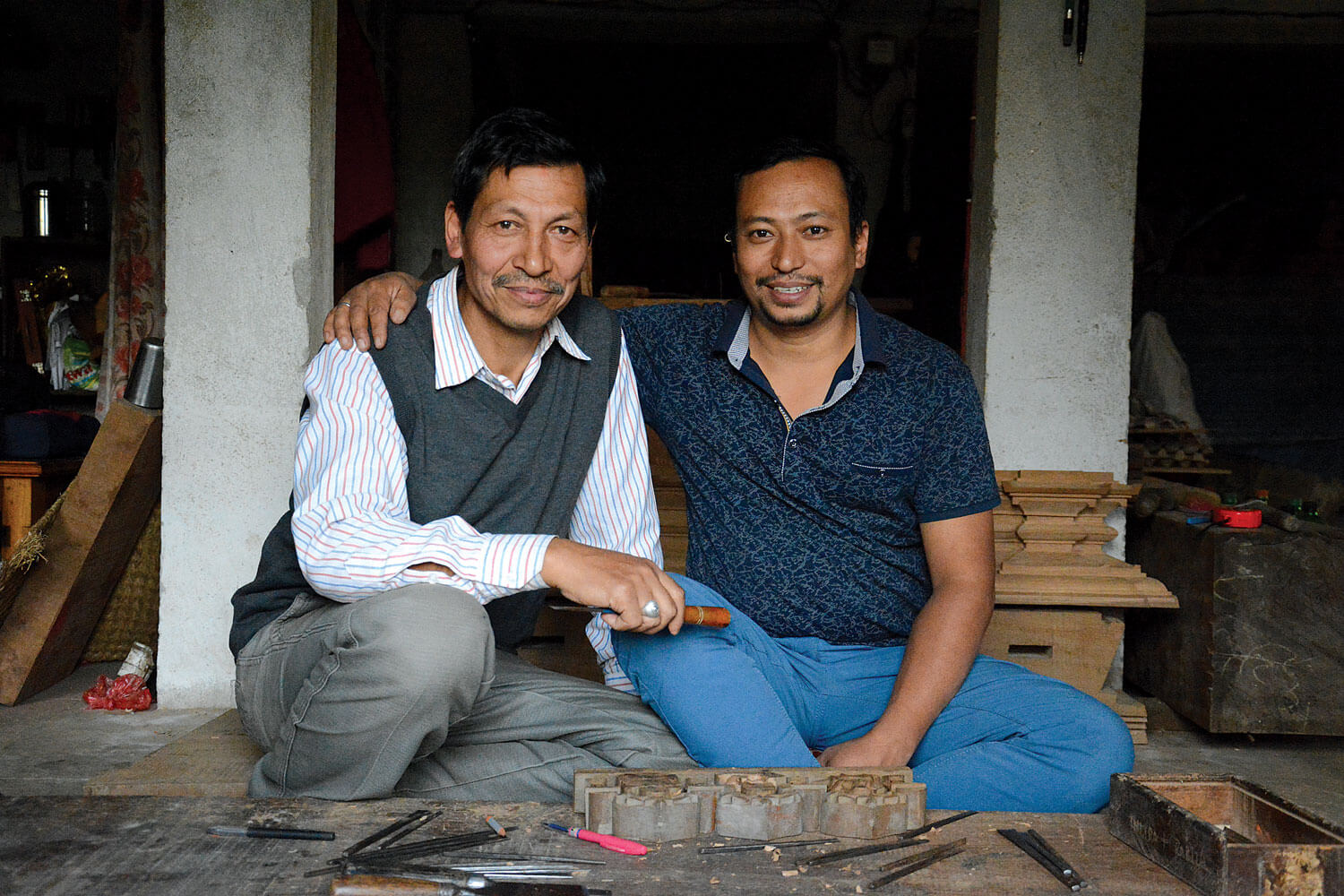Crafting a heritage
“Had I not become a woodcarver, I don’t know what I would be doing today,” says Indra Prasad Shilpakar. “I have never thought about it.”
Indra Prasad, 38, cannot see himself in any profession besides wood carving, despite having a degree in fine arts and a masters in contemporary sculpture from Tribhuvan University.
Not only is wood carving a passion for Shilpakar, his family has been into the craft since the 6th century, and their surname literally translates as ‘woodworker’.
Indra Prasad, like his father Indra Kaji, started playing with wood when he was just 12. By the age of 17 he had already learned the basics of carving from his father.
“I grew up seeing my father’s woodwork and his dedication to keeping our traditional Newa craft alive. It inspired me to follow in the footsteps of my ancestors and continue what the Shilpakars have always been known for,” he adds.
Both Indras have built and restored windows, doors and struts of temples and falcha resting places, and crafted replicas of old masterpieces in Bhaktapur and Patan Darbar Squares. All their work is purely handmade and reflects traditional art, mythology and symbolism.

It takes 15-20 days to complete a skeleton of the work. They draw the figures with pencil, and carve by hand using only a few modern implements: electric saw, plane and drill.
“We do not use modern machines for production because it depletes the quality. Doing it manually may consume time, but it is much more satisfying,” says Indra Kaji.
Adds Indra Prasad, “Wood carving comes only to those who have patience and passion to create, learn and bring art to life. Those who see it as a business do not go a long way.”
Indra Prasad has carved 32 Newa masterpieces in the past 18 years, mostly sculptures and traditional windows. He held his first solo exhibition at the Taragaon Museum earlier this year, and plans another one in Germany next year. It will include carved deities and spirits, dragons and Tantric struts, based on themes of fertility, wisdom, compassion, meditation and music.

For both father and son, wood carving means more than using a chisel and designing. It is a detail-oriented process that requires an understanding of traditions, norms and values.
“There are some rules for carving the designs onto wood. We cannot just randomly chisel away — every object or creature seen in the toran has its precise significance that cannot be changed. That is why understanding the meaning is highly important,” says Indra Kaji.
Both father and son want traditional Newa wood carving taught as a discipline in universities in order to preserve its values and techniques for the future. Otherwise, the father and son may be the last generations of master carvers in Bhaktapur.
“The young generation today is more drawn towards technology and machines. They are in a hurry,” says Indra Prasad. “I cannot guarantee my 9-month son or 5-year-old daughter will be woodcarvers, but I am hopeful they will have new avenues to preserve and promote what my family has been doing for so long.”
Read also:
Coming out of the woodwork, Kunda Dixit




